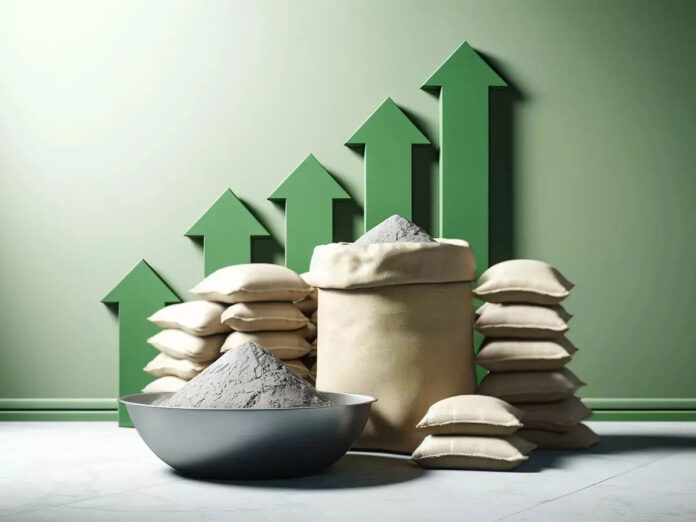NEW DELHI, Apr 23
Cement volume growth recovered to 7-8 per cent on-year in the last quarter of fiscal 2024, after growing approximately 15 per cent on-year in the first half and logging a moderate slowdown in the third quarter due to regional hindrances, said a report by CRISIL. This, it added, was driven on aggressive volume push.
This ensured the third straight year of healthy demand growth at around 11 per cent in fiscal 2024 to approximately 441 million tonne (MT). On this high base, CRISIL MI&A Research said that the demand growth is expected to cool to 6-7 per cent in fiscal 2025.
RJ Corp Succession Plan: Ravi Jaipuria’s son Varun gets food & beverages, daughter Devyani to head education and health
However, the report maintained that pan-India cement prices took a beating in the second half of the fiscal amid increasing competition and higher supply in the market. Prices have plunged by Rs 40-45 per bag in the five months (November 2023- March 2024) since the last price hike in October 2023, it said.
Highlighting the elevated competitive intensity in the market, against the trend of firm pricing in the early months of the fourth quarter and a price drop in March due to the year-end volume push, CRISIL said, January and February did not see sustained price hikes this year. Aggressive volume push at the expense of pricing resulted in approximately 6 per cent sequential decline in cement prices to Rs 370-375 on average per 50 kg bag in the fourth quarter, with exit prices in March at Rs 360-362 per bag.
Thus, at the overall level, the report maintained, cement prices have been subdued, declining by around 1.5 per cent to Rs 383-385 per bag on average in fiscal 2024 from an all-time high of Rs 391 per bag in fiscal 2023.
“Heightened competitive intensity due to entry of new players, 40-42 MT of capacity additions and benign cost pressures catalysed the cement price correction in fiscal 2024 after four consecutive years of price rise at a CAGR of ~4 per cent from fiscal 2020 to fiscal 2023. In fiscal 2025, continued capacity expansion, declining cost pressures and moderating demand are expected to limit any uptick and keep prices range bound at (1)-1 per cent,” said Sehul Bhatt, Director-Research, CRISIL Market Intelligence and Analytics.
On the profitability front, per CRISIL, benign costs brought a sigh of relief to players in fiscal 2024 despite subdued realisations. Although international coal and pet coke prices continued to decline sequentially, by approximately 7 per cent and 11 per cent, respectively, in the fourth quarter, focus on market share is estimated to have shrunk margins by 120-170 bps on-quarter.
On an annual basis, power and fuel costs, accounting for 30-35 per cent of total costs, declined 16-18 per cent in fiscal 2024, mainly due to the dip in Australian coal prices by around 58 per cent and international pet coke prices by around 38 per cent on-year. As a result, profitability is expected to recover in fiscal 2024, with a 300-350 bps expansion, reaching around 17 per cent.
CRISIL MI&A Research forecasts a 9-11 per cent correction in power and fuel cost led by softening of pet coke and coal prices in fiscal 2025. Freight expenditure is also expected to decline 1-3 per cent on the back of lower diesel prices, combined with players’ efforts to improve lead distances through aggressive expansions.
Raw material costs, however, are expected to remain range-bound in fiscal 2025, with better availability of fly ash and slag limiting any significant increase. However, auctioning of limestone mines at premium bids should limit a sharper decline in raw material prices.
“Waning input costs are expected to lead to a further 100-150 bps margin expansion in fiscal 2025 to 18-20 per cent despite tapering realisations. Margins, though, could remain lower compared with the highs of ~25% witnessed in fiscal 2021 amid subdued realisations,” said Sachidanand Choubey, Associate Director-Research, CRISIL Market Intelligence and Analytics.
Key monitorables, it said, will be the pace of key construction projects, impact of monsoon on agricultural profitability, and volatility of crude oil and coal prices due to geopolitical uncertainties, as these can swing profitability.



























